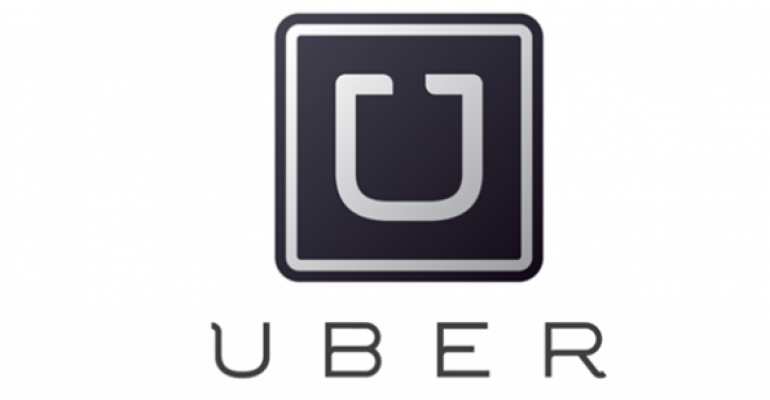Usually, it’s scrappy startup companies that try to break into the restaurant delivery game. But now a pair of well-established companies have taken aim at this business, too. Online retailing behemoth Amazon is testing its new service in Seattle, while rideshare outfit Uber is doing the same in Los Angeles. If you’re wondering whether takeout and delivery could play a larger role in your restaurant’s future, consider this a sign.
Amazon runs a multifaceted distribution network that can deliver any of the 200 million products it sells in a hurry, anywhere in the U.S. But it doesn’t handle actual delivery for any of the 143 Seattle restaurants that are part of Amazon Local’s takeout and delivery program. Participating restaurants do. Amazon merely takes the order and collects payment, keeping a small fee from the transaction.
There’s no disruptive technological leap being made here. Amazon does the same thing as any other takeout and delivery service, of which there are several in Seattle.
So what does Amazon bring to the table? Customers, good ones, all of them used to looking for things they want at Amazon.com and then using their Amazon account to pay for them. “Every month, Amazon visitors spend 88 percent more money online than the average Internet user and make over $22 billion in offline purchases,” the company says.
Participating restaurants also gain visibility. “Amazon is the #1 most reputable brand in the U.S.,” the company notes on its website. “Imagine your company's name alongside the trusted brand of Amazon.”
To use the service, meal-seekers go the local.Amazon.com home page, type in their zip code and are presented with a page that displays thumbnail-size logos of restaurants that offer takeout or delivery—customers can search for one or both—in their area. They click on the logo and are taken to the restaurant’s menu, completing the transaction from there.
Amazon began offering this service in Seattle the day after Thanksgiving. It doesn’t appear to be an important revenue generator for the company yet, but tech experts think it’s a tiny part of a much-grander scheme that will see Amazon sell more things to more people in addition to the way it does now.
But perhaps Amazon intends to handle actual delivery in the future. The company has petitioned the FAA for an exemption that would to allow it to conduct drone experiments outdoors. That petition notes that Amazon’s Seattle R&D lab has already developed drones “that travel over 50 miles per hour and will carry 5-pound payloads.” Perfect for meal delivery.
On-demand car service Uber, which has grown sixfold in just the past year, has also gotten into meal delivery. For a flat $3 fee, residents of select Los Angeles neighborhoods (Beverly Hills/West Hollywood; Westside Los Angeles) can get meals from well-regarded independent restaurants brought to their home or business. Here’s how it works, according to the Uber website:
“It’s shockingly fast and deliciously fresh: uberFRESH delivers healthy, fresh food in about 10 minutes. Compare that with typical food delivery that takes 45 minutes to one hour. Rather than standing in long restaurant lines, trying to find parking at your favorite restaurant, or dealing with unpredictable delivery times, uberFRESH brings you a great lunch or dinner on-demand with none of the hassle.”
Ten minutes is indeed shockingly fast, but Uber can pull it off because every customer gets the same thing from the same restaurant. There’s just one choice per meal period each day, taking all of the guesswork out of the logistics process.
The Amazon business model is to offer many types of food from many different restaurants. Uber offers just one thing at a time. Another difference: customers must meet the Uber driver curbside to get their meal. There’s no door-to-door delivery.
Uber’s forced-choice model sounds limiting, but the choices hold plenty of appeal, as do the restaurants that produce them.
For example, the Dec. 11 lunch offering for the Beverly Hills/Hollywood area was a Grilled Chicken Torta & Mexican Chopped Salad from Border Grill. Its ingredients include achiote-marinated chicken, brie, chipotle aioli, avocado and jalapenos served with salad of charred corn, roasted peppers, green chickpeas, tomato, apple, tortilla chips and cumin vinaigrette. Cost is $12, plus the $3 delivery fee. The prior day’s offering was a Salmon Kale Salad from Sushi Roku, also $12.
Evidence that Amazon and Uber are correct in seeing a growing market for restaurant takeout and delivery can be found in a new study from Technomic and Acosta Sales & Marketing. It looked at how consumers decide what’s for dinner.
The results show that takeout and delivery are frequent options for the 1,500 U.S. consumers surveyed. “In the past 30 days, 86 percent of diners ate at a restaurant; 71 percent ordered food for pick-up or carry out, or ordered from a drive-thru; 66 percent brought home prepared foods from a grocery store; and 48 percent ordered restaurant food for delivery,” the study found.
If your restaurant caters to tech-savvy crowd, either of these new delivery ventures could bring in plenty of extra business without requiring any capital expenditures on your part. Should Amazon and Uber be able to scale up their delivery services to meaningful size, independent restaurants could be the beneficiaries.

